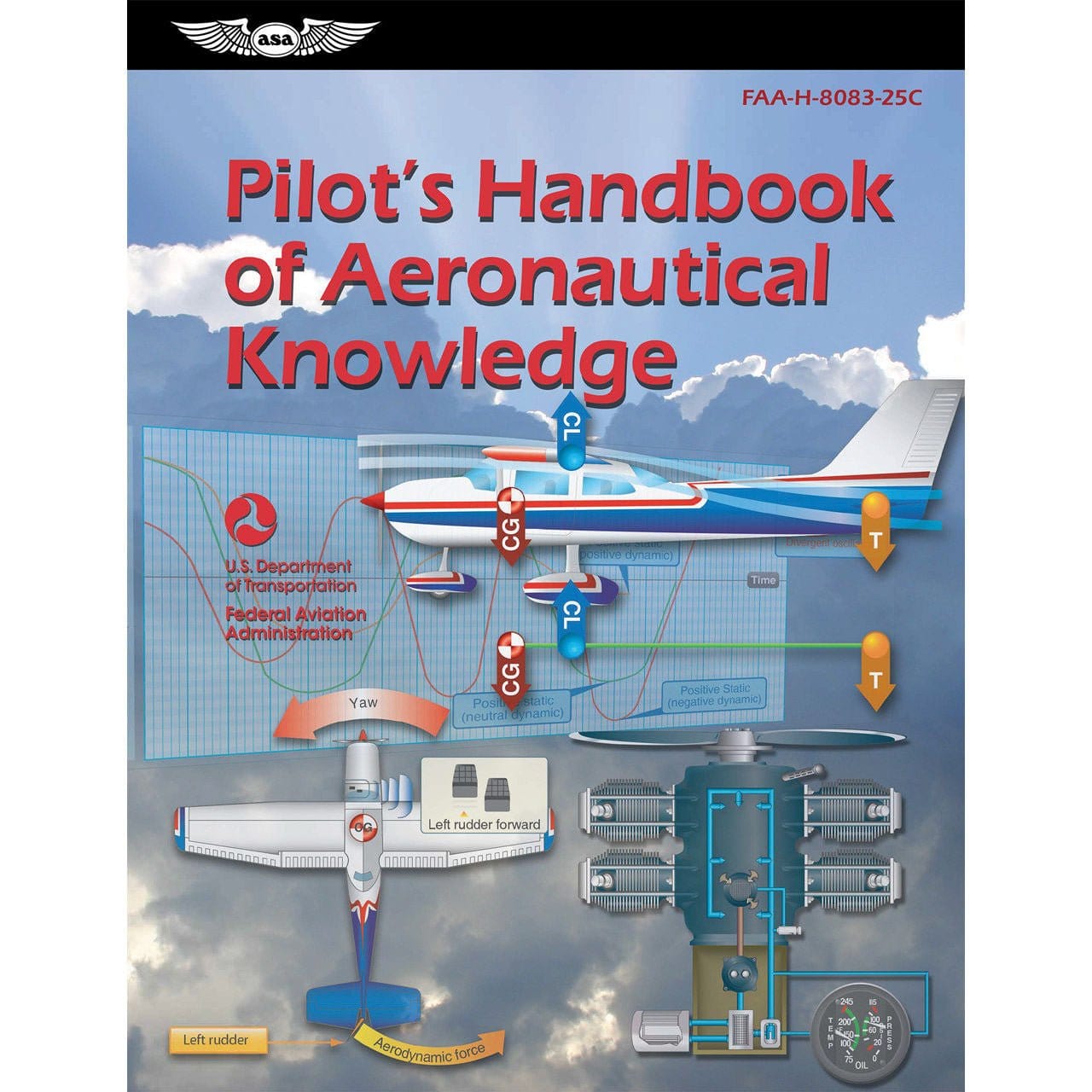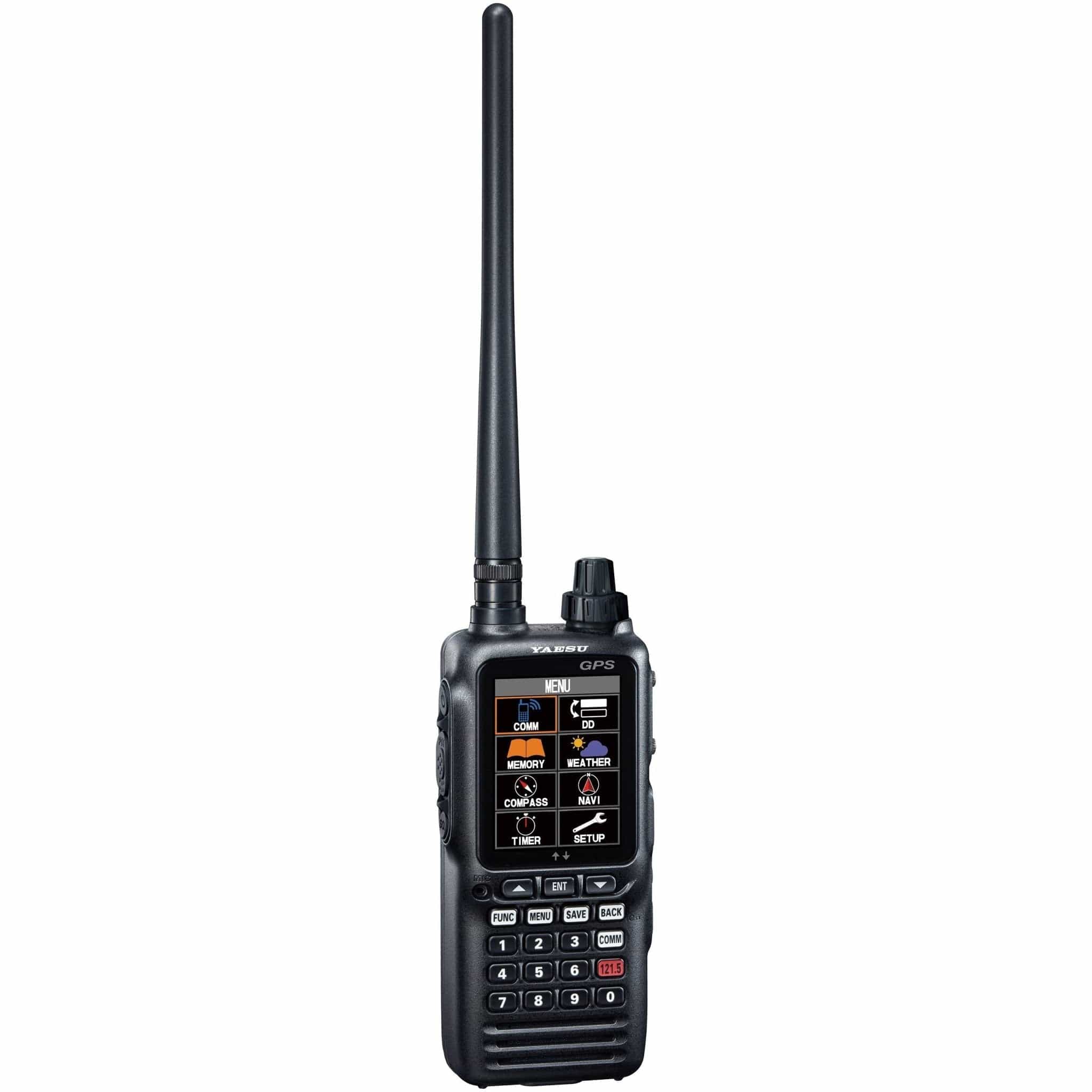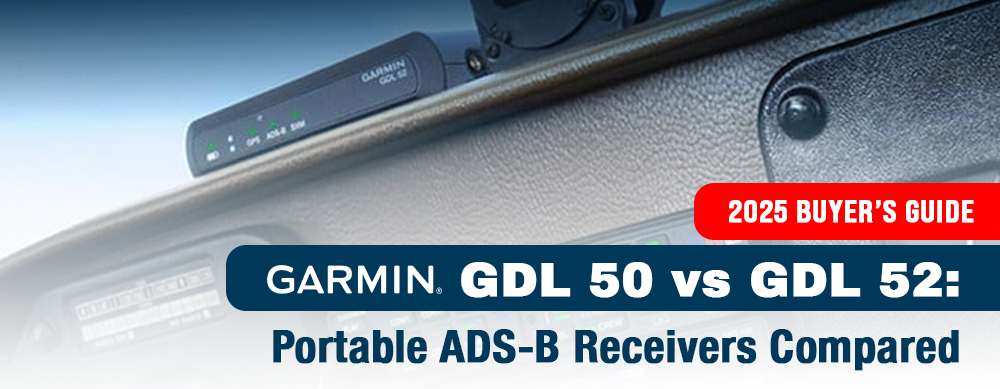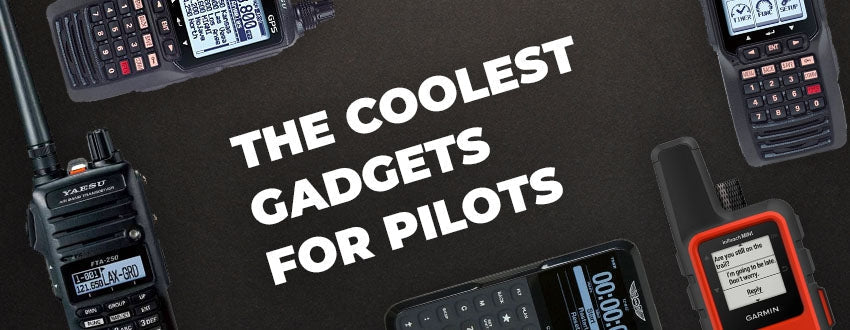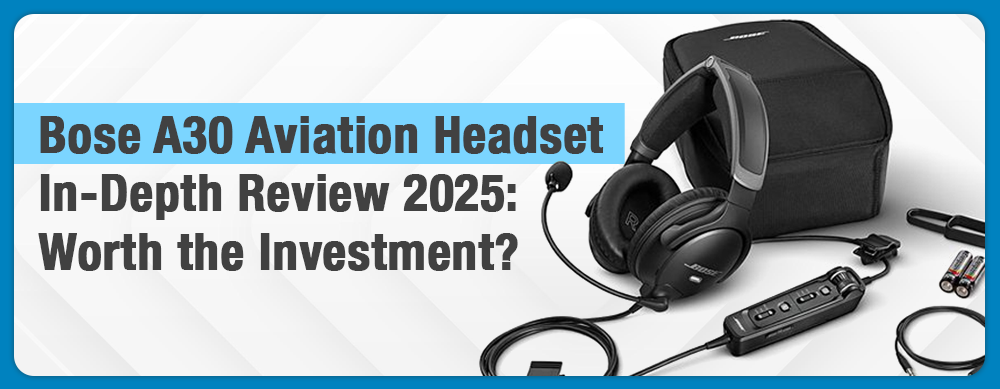Parte de la formación de cada alumno piloto incluye el aprendizaje de los sistemas de navegación. Uno de esos sistemas es el VOR.
¿Pero qué es ?
Bueno, el sistema VOR (VHF Omnidirectional Range) ha guiado a los pilotos desde la década de 1950 y todavía se utiliza activamente como respaldo confiable.
Básicamente, el VOR proporciona rumbos que ayudan a encontrar el camino, incluso en condiciones de baja visibilidad o en cielos desconocidos. A pesar de su antigüedad, el VOR se utiliza a menudo como una alternativa práctica cuando el GPS no está disponible o funciona mal en pleno vuelo.
Aprendamos más sobre los VOR y por qué es importante que los pilotos entiendan cómo funcionan.
RESUMEN
-
VOR, o VHF Omnidirectional Range, es una herramienta de navegación por radio que ha guiado a los pilotos durante décadas.
-
Utilizando VOR, los pilotos rastrean radiales específicos para navegar rutas con precisión.
-
Incluso con GPS disponible, VOR sirve como respaldo confiable si el GPS falla.
-
La Red Operacional Mínima VOR de la FAA garantiza que VOR siga siendo un sistema de respaldo clave.
Tabla de contenido

¿Qué es un VOR en aviación?
Entonces, ¿qué es exactamente VOR?
Un VOR , o Very High Frequency (VHF) Omnidirectional Range , es un sistema de navegación que transmite señales en frecuencias VHF entre 108,0 y 117,95 MHz.
Estas señales se propagan en todas direcciones, como los radios de una rueda, y cada una de ellas se denomina “radial”. El radial en el que te encuentras te indica tu posición en relación con la estación, alineándote con una dirección de brújula magnética.
El receptor VOR de su avión lee dos señales: una señal de “referencia” estacionaria y una señal “variable” giratoria.
El sistema mide la diferencia entre estas señales, llamada “diferencia de fase”, para determinar exactamente en qué radial se encuentra.
Uno estacionario y otro girando a 30 revoluciones por segundo.
Cuando su receptor VOR capta estas señales, calcula la “diferencia de fase”. Esto le permite determinar con precisión el radial exacto desde la estación, que es una línea que apunta en una dirección magnética específica desde la estación terrestre hasta su aeronave.
Cada radio, que se extiende 360 grados alrededor de la estación, representa un rumbo magnético, lo que significa que puedes fijar tu rumbo en función de esta alineación del norte magnético.

¿Cómo funciona VOR?
Navegar con VOR es sencillo una vez que se conocen los conceptos básicos. En la aeronave, el receptor VOR está conectado a un indicador de desviación del rumbo (CDI), que muestra lo cerca que se encuentra del radial deseado.
Al sintonizar su receptor VOR a la frecuencia de una estación y seleccionar un radial, puede mantenerse alineado con una ruta específica simplemente ajustando su rumbo para mantener la aguja del CDI centrada.
Mientras mantengas la aguja centrada, mantendrás el rumbo. Si se desvía, te desviarás y tendrás que corregir el rumbo para volver a la ruta.
Una de las partes más interesantes del uso del VOR es cómo la “detección inversa” puede hacerte tropezar si no tienes cuidado.
Esto sucede cuando configura la dirección radial incorrecta en su indicador, lo que provoca que la aguja se mueva en dirección opuesta a la deseada.
Digamos que su objetivo es volar hacia una estación, pero por error configura el receptor VOR en un radial que lo aleja. La aguja del CDI indicará lo opuesto a lo que necesita, lo que podría enviarlo en la dirección incorrecta.
Los pilotos están entrenados para reconocer y evitar esto fijando siempre el rumbo correcto en el CDI.
Para medir distancias, muchas estaciones VOR están emparejadas con equipos de medición de distancias (DME), llamados estaciones VOR/DME.
DME le indica qué tan lejos se encuentra de la estación VOR, ofreciendo un conjunto completo de datos de ubicación cuando se combina con la información radial del VOR.
Conocer tanto la dirección como la distancia le ayudará a determinar con precisión su posición, lo que resulta especialmente útil durante la aproximación o al navegar por un espacio aéreo complejo.

Uso del Indicador de Desviación del Curso (CDI)
En la cabina, utilizarás un indicador de desviación del rumbo (CDI) para realizar un seguimiento de tu posición en relación con el radial que hayas elegido.
El CDI incluye un selector de rumbo omnidireccional (OBS), una aguja de desviación izquierda-derecha y un indicador TO/FROM.
¿Parece mucho? En realidad, no.
Cuando sintonizas tu VOR en una frecuencia específica y eliges un radial, la aguja del CDI te muestra lo cerca que estás de mantener el rumbo. Solo mantén la aguja centrada y listo.
Si se desvía hacia la izquierda o hacia la derecha, ajuste el rumbo para que vuelva al centro. El indicador TO/FROM le indica si se está acercando o alejando de la estación, lo que resulta especialmente útil cuando se navega entre varias estaciones (18_phak_ch16).
En los vuelos que cubren largas distancias, el CDI le ayuda a mantenerse en el rumbo, incluso sin GPS. En espacios aéreos complejos, configurar un CDI en el próximo radial mientras se usa otro como respaldo le permite moverse sin problemas de una estación a la siguiente.
Esta flexibilidad hace del VOR una herramienta práctica para la navegación IFR y de larga distancia.

Identificador de código morse
Ahora, hablemos de identificación.
Cada estación VOR transmite un identificador único en código Morse. Esta función le permite confirmar que está sintonizado con la estación correcta, algo imprescindible en áreas donde las señales VOR se superponen.
Si bien la identificación de voz está disponible en algunas frecuencias VOR, a menudo es menos confiable, así que use el código Morse para asegurarse de estar en la frecuencia correcta.

Limitaciones de altitud y alcance utilizables
No todos los VOR son iguales y su alcance depende de su clasificación de altitud. A continuación, se ofrece un breve resumen:
-
Terminal VOR (TVOR) : Funciona cerca de los aeropuertos, cubriendo hasta 25 millas náuticas a altitudes de hasta 12.000 pies.
-
VOR de baja altitud (LVOR) : opera por debajo de los 18.000 pies y tiene un alcance de 40 millas náuticas.
-
VOR de gran altitud (HVOR) : cubre diferentes altitudes, desde 40 millas náuticas por debajo de 14.500 pies hasta 130 millas en niveles de vuelo de hasta FL450.
Pero tenga en cuenta que el VOR es un sistema de línea de visión. Las montañas, los edificios e incluso las estructuras grandes pueden bloquear o distorsionar las señales.
Por lo tanto, si vuela bajo o lejos, la claridad de la señal puede disminuir. El Suplemento de la Carta de EE. UU. de la FAA tiene notas adicionales sobre estas limitaciones para estaciones específicas.

Limitaciones del VOR
El sistema VOR es confiable, pero tiene algunas limitaciones. Dado que el VOR depende de señales de radio en línea de visión, obstáculos como montañas, edificios altos u otras estructuras pueden bloquear o distorsionar la señal.
Esta limitación significa que su aeronave debe permanecer dentro de una trayectoria clara y sin obstáculos para mantener la conexión con una estación VOR, especialmente en largas distancias o a altitudes más bajas.
Cuanto más lejos estés de la estación, más alto tendrás que volar para mantener una señal estable.
El “cono de confusión”
Es importante tener en cuenta algo llamado el “cono de confusión”.
Esto sucede cuando estás directamente encima de una estación VOR: las señales se debilitan y tu CDI puede comenzar a funcionar mal.
En lugar de proporcionar una respuesta constante, la aguja del CDI salta, lo que puede desorientarte si confías solo en ella. Durante este cambio, es mejor confiar brevemente en otros instrumentos.
Afortunadamente, el cono solo está directamente encima de la estación, por lo que una vez que pase, el CDI debería volver a estabilizarse.
Pruebas periódicas y precisión
El VOR tiene una precisión de ±1°, lo cual es aceptable, pero el equipo debe probarse periódicamente para que siga siendo confiable. Si vuela VFR, la FAA no exige estas comprobaciones, pero es una buena idea realizar pruebas periódicas. A continuación, le indicamos cómo mantener su VOR bajo control:
-
Instalación de pruebas VOR de la FAA (VOT) : ofrece una señal de referencia para probar su receptor VOR.
-
Puntos de control aéreos y terrestres certificados : disponibles en algunos aeropuertos, le permiten confirmar su alineación con los radiales de la estación.
-
Comprobación de receptor dual : si su avión tiene dos receptores VOR, sintonícelos en la misma estación y compárelos; ambos deben coincidir dentro de una tolerancia de 4°.
Si vuela con reglas de vuelo instrumentales (IFR), las normas de la FAA establecen una diferencia máxima de 4° para las comprobaciones en tierra y de 6° para las comprobaciones en el aire. Registre estos resultados en los registros de su aeronave para mantener un registro de la precisión del VOR.
Las comprobaciones periódicas mantienen la precisión de la navegación, lo que es especialmente importante cuando se vuela en condiciones instrumentales.

VOR y la navegación moderna
Quizás te preguntes: “¿Por qué molestarnos con el VOR si tenemos GPS?”
Buena pregunta.
El VOR puede parecer algo anticuado, pero la Red Operacional Mínima VOR (MON) de la FAA proporciona un respaldo confiable para situaciones en las que el GPS no está disponible.
Las estaciones MON están ubicadas estratégicamente para garantizar una cobertura a 5000 pies sobre el nivel del suelo en la mayoría de las áreas. Esta redundancia le permite navegar de manera segura incluso si falla el GPS.
Además, practicar la navegación VOR mantiene tus habilidades en forma. Confiar demasiado en el GPS puede generar dependencia, mientras que la navegación VOR crea una base sólida para cualquier piloto. Tener esta herramienta de respaldo en tu kit de herramientas te permite volar con más confianza.
Hasta el día de hoy, algunos pilotos utilizan aproximaciones VOR incluso cuando hay GPS disponible, simplemente para practicar o debido a requisitos locales.
Es una de las pocas habilidades de navegación que aún dependen en gran medida de la capacidad del piloto para interpretar las lecturas de los instrumentos en tiempo real sin asistencia digital, una habilidad que muchos en la aviación creen que no debería perderse.

Preguntas frecuentes
-
¿Cuál es el alcance de una señal VOR?
El alcance de una señal VOR depende tanto de su altitud como de la potencia de la estación terrestre.Las estaciones VOR en ruta pueden transmitir señales a una distancia de hasta 200 millas náuticas. Las estaciones VOR terminales, que suelen estar ubicadas cerca de los aeropuertos, tienen un alcance menor, de alrededor de 25 millas náuticas.
-
¿Por qué se sigue utilizando el VOR cuando existe el GPS?
Aunque el GPS es más preciso y fácil de usar, el VOR todavía se mantiene como sistema de respaldo.En caso de fallo del GPS, el VOR garantiza que los pilotos puedan navegar con seguridad. Esta redundancia es crucial, especialmente en zonas donde pueden producirse cortes en el GPS.
-
¿Con qué frecuencia es necesario probar el equipo VOR?
Si vuela bajo las reglas de vuelo por instrumentos (IFR), deberá probar su receptor VOR cada 30 días.Esto implica una prueba VOR en tierra o una verificación aérea utilizando radiales específicos en ubicaciones conocidas.
-
¿Qué ocurre durante la “detección inversa”?
La detección inversa ocurre cuando el instrumento muestra lo contrario de lo que debería.Si está volando hacia una estación pero sus instrumentos están configurados para indicar un radial desde la estación, la aguja de su rumbo actuará en sentido inverso, posiblemente llevándolo en la dirección equivocada.
Llevar
El hecho de que el GPS se esté convirtiendo en la herramienta de navegación dominante no significa que el VOR no sea una habilidad fundamental valiosa y un respaldo útil.
A medida que avanza la tecnología de la aviación, el clásico sistema VOR sirve como recordatorio de los métodos probados y verdaderos que sentaron las bases de los sistemas de navegación de alta tecnología actuales.
Tanto los estudiantes como los aviadores experimentados pueden aprender mucho al darse cuenta de cómo los VOR pueden ser un activo importante en el aire.
¡Manténganse a salvo, pilotos!
¿Interesado en instrumentos de vuelo?
¡Nuestras guías están diseñadas para ayudar!
-
Aproximación ILS: explicación de los sistemas de aterrizaje instrumental
-
La guía completa de los instrumentos de aviación [Más que un paquete de seis]
-
Explicación de VFR vs IFR: Diferencias entre las reglas de vuelo
-
Enfoque visual vs. enfoque de contacto: ideas clave para los pilotos
¿Le resultó útil este artículo?
¿Crees que nos hemos olvidado de alguna pregunta importante de la entrevista? ¡Cuéntanoslo en los comentarios a continuación!


